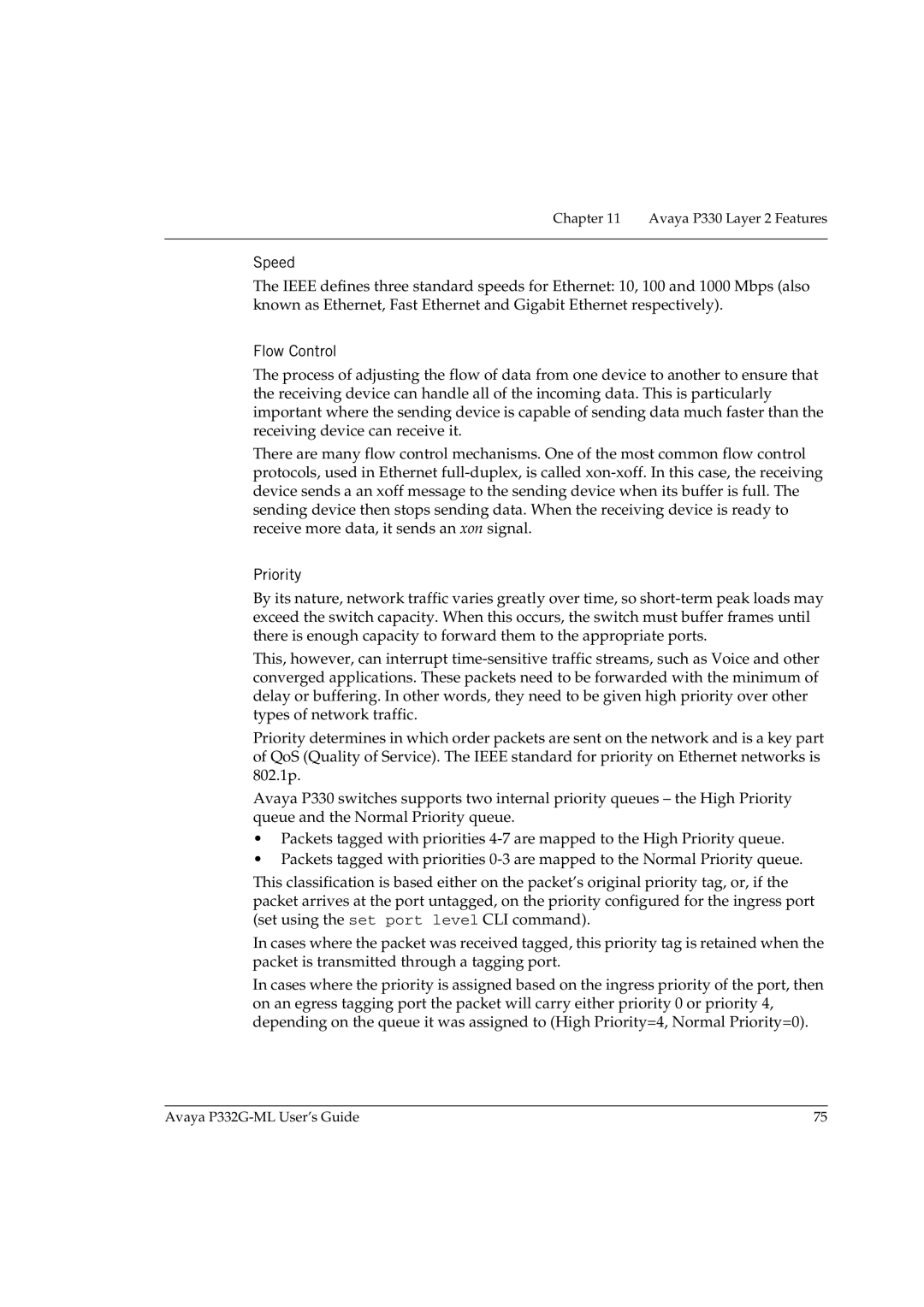
Chapter 11 Avaya P330 Layer 2 Features
Speed
The IEEE defines three standard speeds for Ethernet: 10, 100 and 1000 Mbps (also known as Ethernet, Fast Ethernet and Gigabit Ethernet respectively).
Flow Control
The process of adjusting the flow of data from one device to another to ensure that the receiving device can handle all of the incoming data. This is particularly important where the sending device is capable of sending data much faster than the receiving device can receive it.
There are many flow control mechanisms. One of the most common flow control protocols, used in Ethernet
Priority
By its nature, network traffic varies greatly over time, so
This, however, can interrupt
Priority determines in which order packets are sent on the network and is a key part of QoS (Quality of Service). The IEEE standard for priority on Ethernet networks is 802.1p.
Avaya P330 switches supports two internal priority queues – the High Priority queue and the Normal Priority queue.
•Packets tagged with priorities
•Packets tagged with priorities
This classification is based either on the packet’s original priority tag, or, if the packet arrives at the port untagged, on the priority configured for the ingress port (set using the set port level CLI command).
In cases where the packet was received tagged, this priority tag is retained when the packet is transmitted through a tagging port.
In cases where the priority is assigned based on the ingress priority of the port, then on an egress tagging port the packet will carry either priority 0 or priority 4, depending on the queue it was assigned to (High Priority=4, Normal Priority=0).
Avaya | 75 |
